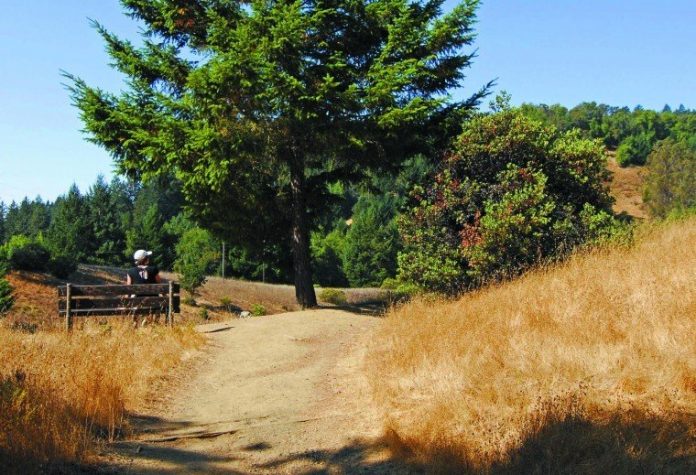Renée and I recently celebrated a wedding anniversary marked by a large number that ends in zero. The number is so big that I naturally assume it refers to my parents and certainly not a couple as young and hip as Renée and I.
Despite my confusion about this, I knew the occasion required a greater observance than a bleary-eyed morning mumble of “happy anniversary” as I spat a mouthful of toothpaste in the bathroom sink. I would have to “up” my game.
In an unusual display of male thoughtfulness, I asked Renée where she would like to go for a few days to celebrate. The Russian River, she said. Great.
We browsed the Internet and decided on a cottage resort in Guerneville. My main childhood memory of the Russian River, and the city of Guerneville in particular, is the annual (or so it seemed) flooding of the town reported on the evening news each winter – not surprising with an annual average rainfall of 50 inches funneled through a narrow valley.
In the summer, Guerneville draws hordes of people looking for cool, wet relief from the summer heat. But on our fall visit, everywhere we went up and down the river, the press of people was light.
On the drive up, we visited Healdsburg. At some point in the past 50 years, either Walt Disney or a fairy princess waved a wand over this town. High-end shops, hoochie-coochie restaurants and lovely downtown landscaping combine to create a Carmel-esque street strolling experience. The Healdsburg of years ago was utterly forgettable, but not anymore. What a transformation.
The afternoon we arrived, our innkeeper, and any local we queried, insisted that we visit Armstrong Redwoods State Natural Reserve. Like Big Basin State Park or Muir Woods, Armstrong Reserve is one of the few places where a few old growth coast redwoods still stand.
On our first morning, we turned onto Armstrong Woods Road in downtown Guerneville and followed it several miles to the preserve. We stepped from our car into the cool, crisp morning air that had collected on the valley floor. The visitor center was not yet open to give hiking advice, so we decided to start on the East Ridge Trail that ascends quickly from the parking lot. We rose above the redwoods on the valley floor and entered a drier forest of Douglas fir, madrone, tanoak, and bay. Now high above the valley, we edged our way upstream along the ridge that encloses the preserve.
Two-and-a-half miles out, we curled around the head of the valley and the landscape lightened, beginning to hint at chaparral on the hills above. Here, we turned down canyon and followed the road back down to Fife Creek and the valley floor. It was here we found the star attraction.
No matter how many times I have stood beneath an ancient coast redwood, I am still staggered. At 310 feet, the Parson Jones tree is the tallest redwood in the preserve. The impressive girth of this tree is just as massive when it disappears into the forest canopy far overhead. Close by is the Colonel Armstrong tree, at 1,400 years old, the oldest in the preserve.
We enjoyed our walk along the rim of the preserve, but the enchantment is definitely down below among the redwoods along Fife Creek. Walking the lush forest floor past these monarchs, you will enjoy a peaceful stillness that is a nice antidote to the Russian River’s commercial hubbub.













